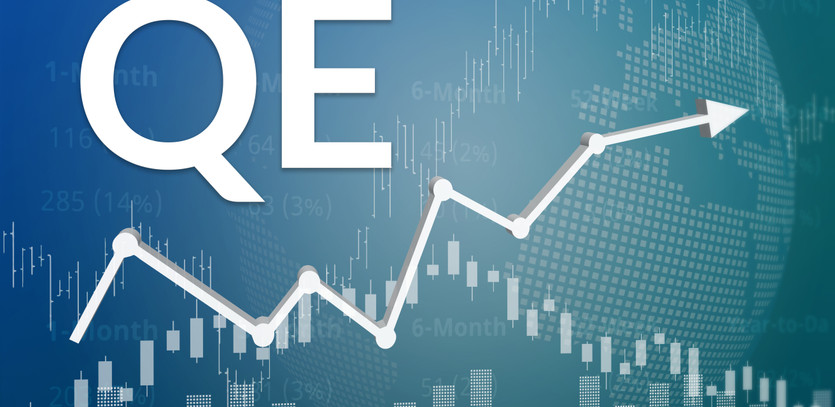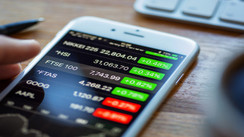Diving Deeper into the Ocean of Economics: The Dance of Quantitative Easing and the Stock Market
When we navigate the deep waters of fiscal policies from the Federal Reserve, the potent force of the Quantitative Easing (QE) program stands as a behemoth, casting large waves throughout the financial ecosystem. These waves inevitably crash onto the shores of the stock market, setting in motion a series of reactions. The true challenge lies in understanding these reactions, an intricate dance that often feels like deciphering a cryptic economic language.
Historical trends offer us a fascinating tale of this interaction. Here, we see moments where the most vigorous bull runs in the stock market coincided with active periods of QE policy.
The beating heart of QE, its central objective, is to function as a powerhouse, generating a surge of economic activity. This is accomplished through the Federal Reserve's strategic acquisition of a significant volume of government bonds or other assets from banks. This transfer not only pumps a large amount of cash into the financial system but also trickles down to stimulate business growth and expansion. Forward-looking investors, recognizing the impending increase in revenue, position themselves advantageously by investing in stocks.
However, this is merely a glimpse of the whole picture. The real impact of QE on stock prices is a nuanced narrative, filled with layers of subtleties that paint a more detailed panorama of the economic landscape.
Understanding the Intricacies of Quantitative Easing: Key Factors at Play
- The lifeblood of QE lies in its aim to spark economic activity, realized through an extensive influx of liquidity into the market's veins.
- In this orchestrated financial ballet, the central bank dons the role of the conductor, masterfully creating new monetary reserves from thin air through the purchase of bonds and other securities from commercial banks.
- The echoes of this activity reverberate through the investment world, where investors are on the lookout for burgeoning business revenues, thereby aligning their portfolios towards those companies predicted to be on a trajectory of growth.
Feeling the Pulse of the Stock Market: A Resonance to The Fed's Movements
The policy decisions from the Federal Reserve act as the rhythm, setting the tempo for the stock market's movements. Expansionary policies amplify the market's pulse, causing a surge of activity. In contrast, contractionary policies seem to apply a brake, slowing down the market's movements.
Investors may be attracted by the prospect of asset price inflation during the early stages of an expansionary phase. More commonly, however, the confidence boost that often accompanies expansionary policies is attributed to the positive anticipation of a healthier, more robust economic environment in the aftermath.
Tracking the Ripple Effects of Quantitative Easing
The implementation of QE applies significant downward pressure on interest rates, affecting potential returns from traditionally safer investment avenues such as money market accounts, certificates of deposit (CDs), Treasuries, and corporate bonds.
This prompts investors to steer their course towards riskier investment territories in their quest for higher returns. Many of these market participants recalibrate their portfolios to favor stocks, igniting a bull run in the stock market.
Simultaneously, the allure of low interest rates encourages public companies to consider expansion opportunities due to the potential of lower borrowing costs. In line with the principles of fundamental analysis, this expansionary stance is seen as a green flag, signaling the promise of a brighter future. This positive outlook incites investors to acquire more stock, triggering a chain reaction that drives stock prices upwards.
Navigating the Economic Maze: The Pivotal Role of the Federal Reserve
In the discourse among economists and market analysts, there's a claim that QE's influence stretches into the realm of artificial asset price inflation. In a natural market setting, prices are a reflection of the delicate balance between investor demand and the overall health of the business environment.
Historical Marker: The QE program has made four appearances since the daunting financial crisis of 2008-2009, with the fourth iteration (QE4) kickstarting in September 2019.
When the Federal Reserve dives into the financial marketplace to purchase assets, it alters the market dynamics significantly. This activity ripples through price signals, affecting them in three major ways:
- It instigates a decline in interest rates,
- It stokes the flames of demand for assets,
- It gradually undermines the purchasing power of money.
In this adjusted market environment, a stock's price may diverge from its true reflection of a company's value and investor demand. As a result, market participants find themselves reshaping their strategies to stay attuned to the changing market rhythm.
Gazing into the Economic Crystal Ball: Post-Quantitative Easing Scenario
The end of a QE policy presents a curtain of uncertainty, creating a sense of suspense about the potential impact on the stock market.
From 2009 to 2014, the Federal Reserve's balance sheet expanded by over $4 trillion. These figures represent a massive liability for the Federal Reserve and, at the same time, a significant asset for debt issuers worldwide.
The potential ripple effects on the bond market remain unclear if the Fed decides to let the bonds mature without replacement. Alongside this, there's a possibility that companies stretching their resources into future operations could be met with inadequate demand, suggesting that the fallout from QE might not always be positive.
Some analysts argue that the Federal Reserve's low-interest rate policy in the aftermath of the late 1990s' dot-com crash sowed the seeds for the early 21st-century housing bubble. Could a similar situation be looming over the stock market in the wake of QE, echoing the housing price crash of 2008-09? This question remains shrouded in the fog of economic speculation.





